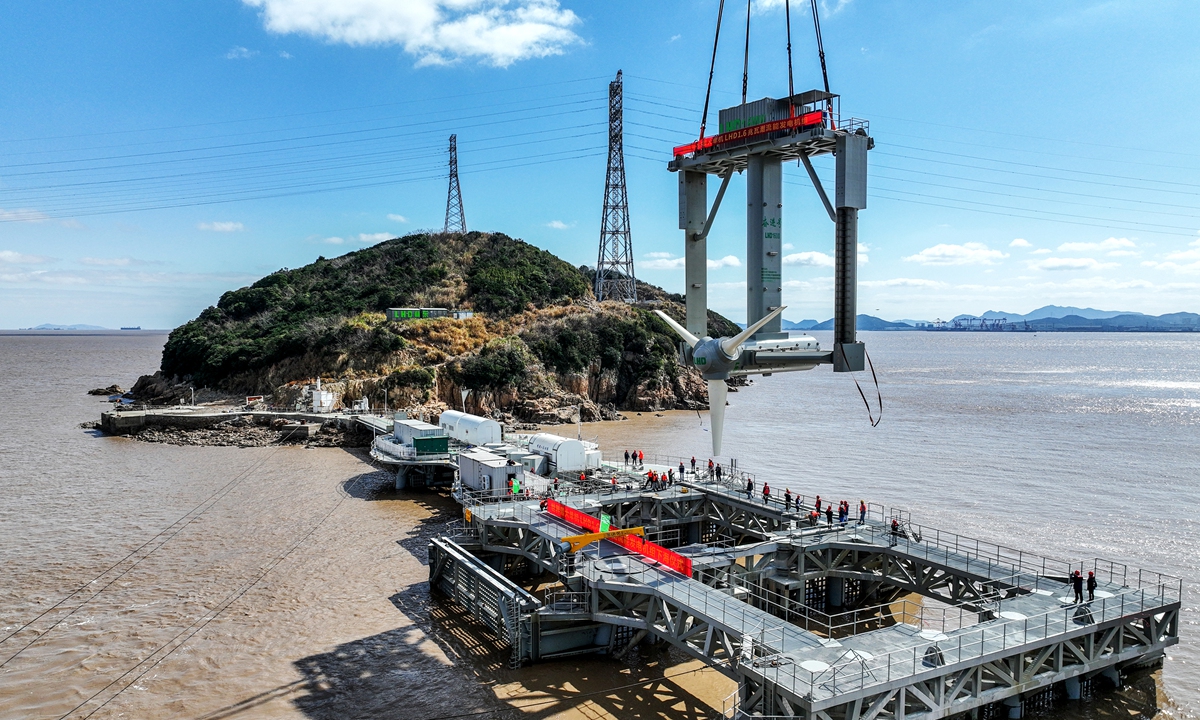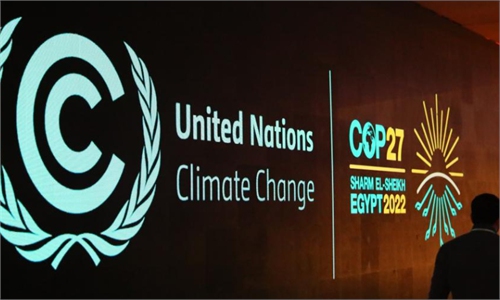Chinese provinces work out detailed action plans to curb carbon emissions and realize carbon peak

A view of a tide-powered electric generator with output of 1.6 megawatts in Zhoushan, East China's Zhejiang Province on Feburary 24, 2022. The set of generators has a designed generating capacity of 2 billion kilowatt hours a year, and they are expected to reduce the emission of carbon dioxide by 1,994 tons. Photo: cnsphotos
A dozen Chinese localities have released detailed action plans to promote energy conservation and carbon reductions as of Wednesday, while key industries are formulating path toward reaching their carbon peak, a further step toward China's commitment to deal with climate change.
While net-zero pledges made by some developing countries are falling far short, experts urge them to turn their promises into concrete actions, in particular stating that the US should strengthen climate cooperation with China rather than impose restrictions on made-in-China solar panels.
Central China's Hunan Province aims to make non-fossil fuels account for about 22 percent of its total energy consumption by 2025, and up to 25 percent by 2030 in a bid to attain the goal of carbon peak by 2030.
During the 15th Five-Year Plan period (2026-30), Hunan's industrial structure adjustment will target at phasing in a clean, low-carbon, safe and efficient energy system, and a low-carbon development path for key sectors will be put in place, with breakthroughs in the industrial application of green and low-carbon technologies, according to the website of the provincial government.
In addition to Hunan, other areas including Beijing, Shanghai, East China's Jiangsu Province have also released their tailored plans.
“Given differences among Chinese localities, including resources endowments, industrial structures and transformation paths, formulating their own plans will offer policy signals for local industries and markets so as to guide their low-carbon transformation and upgrading,” Guo Hongyu, deputy director from Beijing-based nongovernmental environmental organization Greenovation Hub, told the Global Times on Wednesday.
At the China Auto Forum on Wednesday, Fu Bingfeng, executive vice president and secretary-general of the China Association of Automobile Manufacturers said the association is formulating a unified set of standards for carmakers' carbon emissions, in a bid to cut carbon emissions during the whole production process to realize high-quality development.
On Tuesday, China released a plan to advance low-carbon development in the building materials sector, one of the largest sources of industrial carbon emissions. It said that efforts will be made to promote energy-saving and low-carbon technologies and reducing energy consumption and carbon dioxide emissions per unit of GDP in key products, including cement, glass, and ceramics between 2021-25.
"Ever since the country's carbon peak and carbon neutrality goals were made public several years ago, China is the country, among major economies, that has made the most efforts in fulfilling its commitment and contributed the most to global climate," Lin Boqiang, director of the China Center for Energy Economics Research at Xiamen University, told the Global Times on Wednesday.
China has put in place the world's biggest clean energy system, with installed capacity of renewable energy surpassing 1.1 billion kilowatts, whereas the installed capacity of hydropower, wind power, solar power and biomass power all rank No 1 in the world. Meanwhile, the share of coal in primary energy consumption fell from 68.5 percent to 56 percent in the past 10 years, official data showed.
She said that China may reach goal of carbon emissions peak in advance, as the nation’s fast development of renewable energies and EVs with decreasing costs, and low-carbon city pilot program and climate financing and investment pilots continue to progress.
The US Solar Energy Industries Association forecast that the US will install a total of 15.7 gigawatts of solar energy this year, the lowest in three years as a result of the US Commerce Department's tariff investigation.


